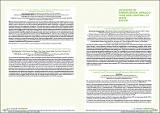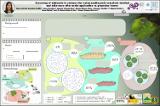Por favor, use este identificador para citar o enlazar a este item:
http://hdl.handle.net/10261/262621COMPARTIR / EXPORTAR:
 SHARE
BASE SHARE
BASE
|
|
| Visualizar otros formatos: MARC | Dublin Core | RDF | ORE | MODS | METS | DIDL | DATACITE | |

| Título: | Screening of adjuvants to enhance the entomopathogenic nematode survival and adherence after aerial application on grapevine leaves |
Autor: | González-Trujillo, María del Mar CSIC ORCID; Čepulyte, Rasa; Vicente-Díez, Ignacio CSIC; Blanco-Pérez, Rubén CSIC ORCID ; Chelkha, Maryam CSIC ORCID; Puelles, Miguel CSIC ORCID CVN; Gámez Sanz, Anna; Ramos-Saez De Ojer, José Luis; Campos-Herrera, Raquel CSIC ORCID | Fecha de publicación: | 2-jul-2021 | Citación: | International Congress on Invertebrate Pathology and Microbial Control - 53rd Annual Meeting of the Society for Invertebrate Pathology (2021) | Resumen: | Expanding the available biological control agents to fight against aerial grapevine pests can provide new strategies in both IPM and organic viticulture. Current application technology supports the implementation of entomopathogenic nematodes (EPNs) against aerial pests. We hypostatized that by selecting the best combination of EPN-adjuvant, we can enhance EPN viability and persistence on grapevine leaves, and herewith apply EPN against aerial grapevine pests. The aim of this study was to screen for the best adjuvant-EPN mix to ensure high survival, viability, and adherence on leaves. The compatibility of five commercial adjuvants approved for grapevine application (Multi-US, MaxiMix, Dash HC, Nu-film-17 and Adrex) and four EPN populations (Heterorhabditis bacteriophora VM-21, Steinernema carpocapsae ALL, S. feltiae RM-107 and S. feltiae Koppert) were tested by exploring the maximum adjuvant recommended field dosage concentration. In laboratory experiments, we investigated the survival of infective juveniles (IJs) after 4 and 24 h exposure to each adjuvant. Thereafter, we tested their infectivity against the model insect Galleria mellonella (Lepidoptera: Pyralidae). Adherence to leaves and survival was determined by spraying the IJs-adjuvant combination on grapevine leaves and establishing the leave coverage and their survival after 1 h. Overall, all the EPN populations were compatible with all the adjuvants, except for H. bacteriophora-Adrex combination. Also, most of the adjuvants provided similar to control leave coverages, maintaining IJs survival ~80% after 1 h. Additional studies are needed to increase the grapevine leave coverage by EPN. These promising results bring new opportunities to apply EPN against aerial grapevine pests. | Descripción: | Trabajo presentado en el International Congress on Invertebrate Pathology and Microbial Control - 53rd Annual Meeting of the Society for Invertebrate Pathology, celebrado de forma virtual del 28 de junio al 2 de julio de 2021 | URI: | http://hdl.handle.net/10261/262621 |
| Aparece en las colecciones: | (ICVV) Comunicaciones congresos |
Ficheros en este ítem:
| Fichero | Descripción | Tamaño | Formato | |
|---|---|---|---|---|
| Screening of adjuvants to enhance the entomopathogenic nematode survival and adherence after aerial application on grapevine leaves.pdf | Resumen | 541,41 kB | Adobe PDF |  Visualizar/Abrir |
| Gonzalez-Trujillo et al SIP-2021 Poster.pdf | Poster | 2,1 MB | Adobe PDF |  Visualizar/Abrir |
CORE Recommender
NOTA: Los ítems de Digital.CSIC están protegidos por copyright, con todos los derechos reservados, a menos que se indique lo contrario.
